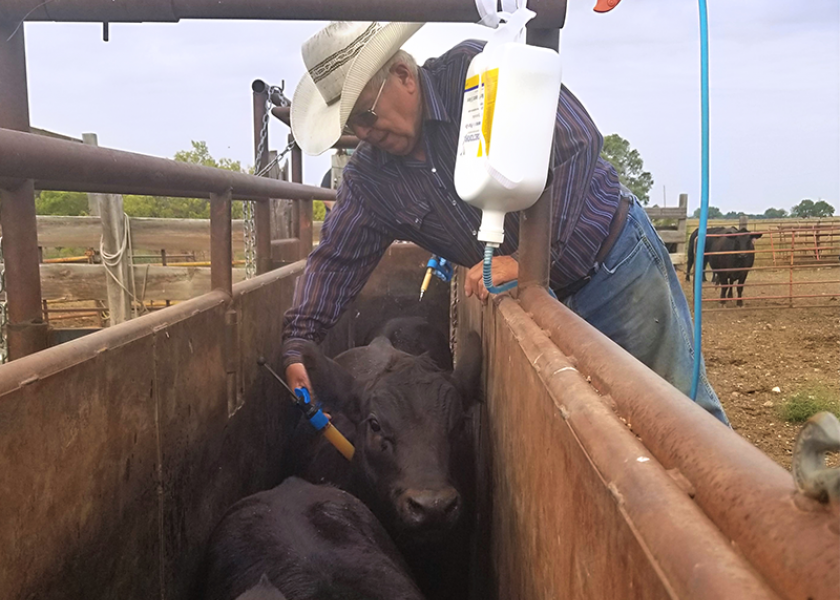Be Flexible for Better Parasite Control

While parasite control might seem as simple as choosing a product and application method, the task these days is no easy venture. Giving consideration to timing while also selecting the chemical best suited for the parasite to be controlled can help producers avoid potential resistance issues.
According to Dr. Mark Alley, managing technical services veterinarian with Zoetis, parasite control becomes complicated when treatment methods include the same products or chemicals used repeatedly.
Because parasite load varies by time of year and region of the country, Alley says those factors must be considered when developing a parasite control regimen. “The main thing is to think about which animals are going to be most impacted by parasites,” Alley explains.
He says it’s also important to consider when animals are going to be processed and whether or not that corresponds with the best time for parasite control. Flexibility can create an opportunity to do a better job with parasite control while also not fostering resistance issues with a particular product or chemical
The cattle business is rooted in tradition. Because the industry hasn’t seen a lot of new parasite control products hit the market, Alley says it’s important for producers to consider changing the way parasiticides are used. Timing is key in that.
“Probably the best time to deworm adult cows is within a few weeks prior to calving,” Alley says. However, he encourages producers to work with their veterinarian to consider an alternate schedule if that timing doesn’t work.
Alley says another consideration should be the cow’s nutrition and how available forage might be impacted by weather.
“We might need to do some deworming, especially in younger animals, at a time that we normally would not, if those animals are nutritionally compromised. That’s when our parasites will probably have more of an impact than they would if there’s plenty of nutrition available,” he explains.
According to Alley, younger animals are most susceptible to parasites, as they enter their first grazing season, regardless of the time of year. He says those animals can be impacted by a lot of different parasites, especially Cooperia, Haemonchus and Nematodirus.
“Unfortunately, the dewormers that we typically reach for to control those are macrocyclic lactones,” he explains. “And with those parasites, efficacy may not be as good as it once was.”
Based on research, benzimidazole dewormers, like Valbazen®, might be better suited to control Cooperia, Haemonchus and Nematodirus, he adds.1
While internal parasite control is important, it’s also vital to develop a plan for keeping external parasites at bay. Alley says insect growth regulators that can be added to feed as well as fly tags, back rubs and other topicals are good options for controlling flies and lice.
Alley says a veterinarian can assist producers with identifying parasite issues and help them establish a plan of action to address the challenges they are facing throughout the entire year.
“It’s very important to identify the correct product to administer at the right time and to give it to the right animals at the proper dose,” Alley says. “All of those factors play a major role in maintaining the effectiveness of the products available today.”
Cattle must not be slaughtered within 27 days after the last treatment with Valbazen. Do not use in female dairy cattle of breeding age. Do not administer to female cattle during the first 45 days of pregnancy or for 45 days after removal of bulls. Consult your veterinarian for assistance in the diagnosis, treatment, and control of parasitism.
1 Williams JC, DeRosa A, Nakamura Y, Loyacano AF. Comparative efficacy of ivermectin pour-on, albendazole, oxfendazole and fenbendazole against Ostertagia ostertagi inhibited larvae, other gastrointestinal nematodes and lungworm of cattle. Veterinary Parasitology. 1997; 73:73-82.
All trademarks are the property of Zoetis Services LLC or a related company or a licensor unless otherwise noted. © 2021 Zoetis Services LLC. All rights reserved. GBF-00539







